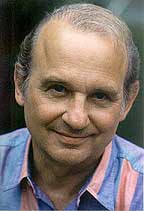 paul buff
paul buff paul buff
paul buff
Paul C.
Buff is name-checked on the cover of The Mothers Of Invention's "Freak Out!" (1966) under the
heading "These People Have Contributed Materially In Many Ways To Make Our
Music What It Is. Please Do Not Hold It Against Them"; he is also mentioned
in "The Real Frank Zappa Book" (1989) as an "amazing
gentleman" (see the chapter "Let's Get Into Show Business").
Inventor,
engineer, artist, composer, arranger and multi-instrumentalist, Buff was a key
player in an early turning point not only in FZ's career, but surf music in
general, and the nature of the recording industry itself.
Paul
Conrad Buff grew up in Cucamonga. Joining the Marine Corps, after graduating, he
trained in aviation electronics. He returned to civilian life and took a job
making parts for guided missiles at General Dynamics. After a few months at the
"Bomb factory", as FZ would refer to it, he was bored with his job so
he borrowed $1000 and, knowing nothing about the music business, set up the Pal
recording studio in Cucamonga. Recording studios were usually controlled by the
big record companies at that time so he could offer a cheaper alternative for
would-be bands to record. His lack of knowledge and finance meant that the
studio produced a different sound from the major studios which became known as
the "Pal Sound". He worked with groups such as the Surfaris
("Wipe Out"), The Chantays ("Pipeline"), and many others.
In 1960,
Ronnie Williams introduced FZ to Buff. Paul, Frank, Ronnie, Ray Collins and Dave
Aerni recorded a bunch of 7" singles at Pal recording studio between late
'60 and 1963. Buff claims to be the "Godfather of Snorks" and other
such early Zappa noises..., although, according to Ray Collins, this title
should go to Dick Barber.
In 1963,
Buff got the opportunity to work with Art Laboe at Original Sound in Hollywood
where he engineered the Run Home Slow soundtrack recording. By mid 1964 FZ had
moved into the Pal Studio and in August FZ purchased the studio from Buff for
$1000, his Fender Jazzmaster guitar and a set of drums. FZ recalled (in TRFZB):
"In other words, I agreed to take over his lease and the rest of his
debt." FZ renamed the studio as Studio Z.
Buff
continued to work at Original Sound recording groups such as The Strawberry
Alarm Clock and Sugarloaf. He set up Allison Research Inc. to produce and market
the studio equipment he had designed. Allison Research flourished and Buff moved
to Nashville. Here he became interested in developing photographic lighting
equipment and set up the White Lightning company. Over the years this has become
a leading supplier of professional photo lighting equipment.
Paul Buff can be heard on fuzz bass on The Lost Episodes, and had a hand in recording the first two tracks of the Mystery Disc.
October 3, 10 & 17, 2012, Bobby Marquis aired a special on Paul Buff's music and the release of the Paul Buff Box by Crossfire Publications on CKCU-FM, Ottowa's community radio station.
info from paul buff (conversation with patrick neve)
discography - paul buff's recordings at pal
discography - paul buff's post-pal recordings
discography - paul buff on frank zappa albums
from: purple
(purple@ingress.com)
i was browsing in a barnes & noble in manhattan last friday (the self
improvement section) when i spotted a book titled women to women: a new plan for
success and well-being from today's most celebrated women. i was frowning
through it when suddenly i couldn't believe my eyes - there on p.97 a beautiful
woman doctor stood wearing a t-shirt that shouted: "i know paul c.
buff personally." now that's hip!
from: paul
buff (paul@pbuff.com)
bob, fact is stranger than
fiction!! actually we made about 500 of these shirts in the early 80's.